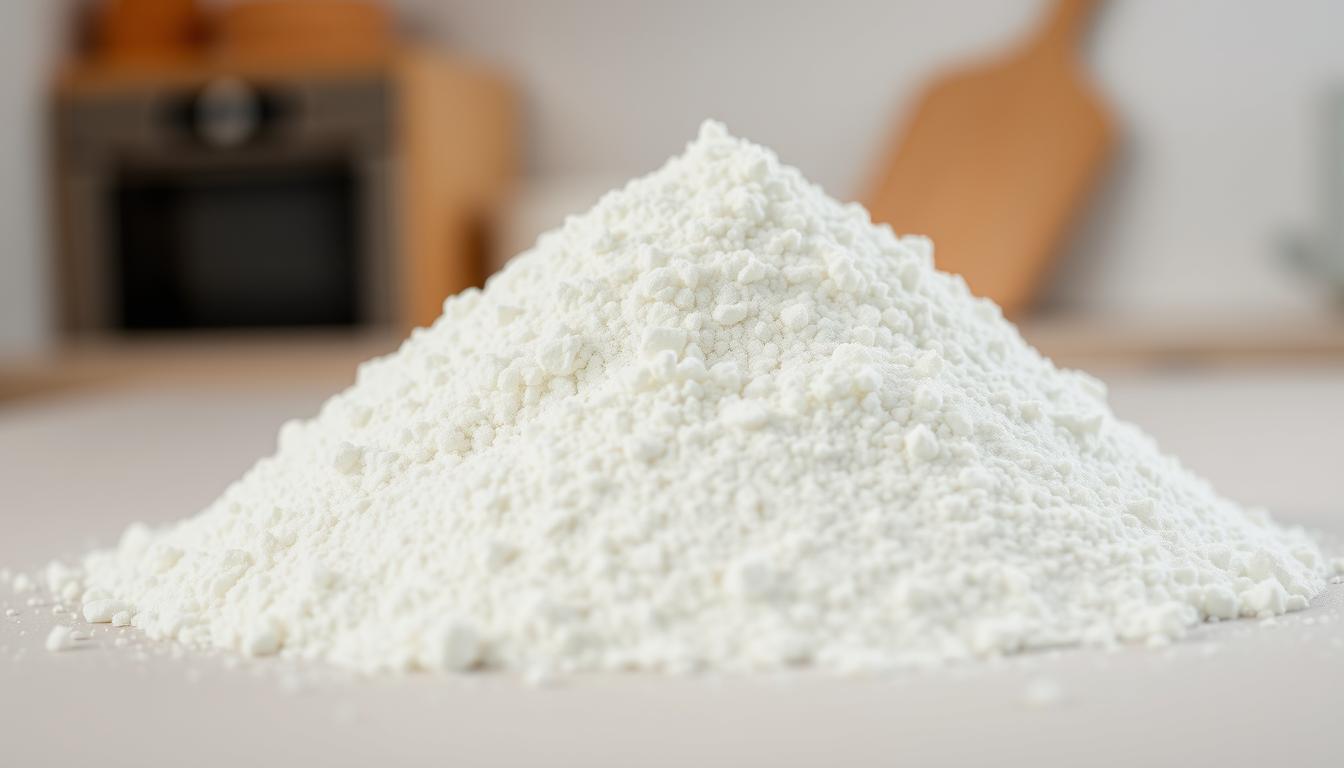
100 Questions About Sodium Alginate—Answered!
SUBSCRIBE TO OUR BLOG
Promotions, new products, and recipes.
Introduction
Sodium alginate, a natural polysaccharide extracted from brown seaweed, is widely recognized for its gelling, thickening, and stabilizing properties. First identified in the 1880s by British chemist Edward C.C. Stanford, sodium alginate has revolutionized numerous industries—from food science to pharmaceuticals and beyond. This FAQ aims to answer the 100 most commonly asked questions about sodium alginate, helping you understand its value, versatility, and safe usage.
Section 1: Introduction and Discovery (5 Questions)
1. What is sodium alginate?
Sodium alginate is a natural carbohydrate polymer extracted from brown seaweed, primarily used as a gelling, thickening, and stabilizing agent.
2. Who discovered sodium alginate?
Edward C.C. Stanford, a British chemist, discovered sodium alginate in the 1880s.
3. Why was sodium alginate originally developed?
Initially, it was explored for its viscosity and water-holding capacity, leading to its application in textiles and later food science.
4. What makes sodium alginate unique?
Its ability to form heat-stable gels in the presence of calcium ions makes it a valuable tool across multiple industries.
5. Where is sodium alginate sourced from?
It is extracted from the cell walls of brown seaweed varieties such as Laminaria and Ascophyllum.
Section 2: Chemical Structure and Properties (10 Questions)
6. What is the chemical formula of sodium alginate?
Its general formula is (C6H7NaO6).
7. Is sodium alginate water-soluble?
Yes, it dissolves in cold or warm water to form a viscous solution.
8. What is the pH range of sodium alginate solutions?
Typically between 6.0 and 8.0.
9. What is the molecular weight of sodium alginate?
It varies, usually between 32,000 and 400,000 Da depending on its source and processing.
10. What is the appearance of sodium alginate?
A white to off-white powder with no distinct odor.
11. Does sodium alginate have a charge?
Yes, it's an anionic (negatively charged) polymer.
12. How does sodium alginate form gels?
It forms gels through cross-linking with divalent cations, especially calcium ions.
13. What are M/G ratios in alginate?
The M (mannuronic acid) to G (guluronic acid) ratio affects the gel strength and texture.
14. Is sodium alginate affected by heat?
It is stable under moderate heat, but extreme temperatures can degrade it.
15. Can sodium alginate be used in acidic environments?
Yes, but its gelling ability is reduced at very low pH levels.
Section 3: Food Science and Culinary Use (15 Questions)
16. Is sodium alginate safe to eat?
Yes, it is generally recognized as safe (GRAS) by the FDA when used in accordance with good manufacturing practices.
17. What role does sodium alginate play in food?
It acts as a thickener, stabilizer, and gelling agent in various food products.
18. What foods commonly contain sodium alginate?
Ice cream, salad dressings, sauces, fruit-filled snacks, and restructured meat products.
19. Can sodium alginate be used in vegan recipes?
Yes, it is entirely plant-based and suitable for vegan and vegetarian diets.
20. How does sodium alginate improve texture in food?
It helps retain moisture, provides smooth consistency, and creates gel-like textures.
21. Does sodium alginate affect taste?
No, it is tasteless and does not alter the flavor of food.
22. How much sodium alginate is typically used in food?
Usually between 0.5% and 1.5% of the total formulation by weight.
23. Can sodium alginate be used in baking?
Yes, it can improve dough consistency and moisture retention.
24. Is sodium alginate heat-stable during cooking?
Yes, it retains its gelling and thickening abilities through moderate heat.
25. How does it compare to gelatin in food?
Sodium alginate forms heat-stable gels and is vegan, while gelatin is animal-derived and melts with heat.
26. Can sodium alginate be used in dairy-free ice cream?
Yes, it helps improve texture and prevent ice crystal formation.
27. What is the E-number for sodium alginate in food?
Its food additive code is E401.
28. How does sodium alginate prevent syneresis in food?
It helps retain moisture and prevent liquid separation in gels and sauces.
29. Can I use sodium alginate in homemade jam?
Yes, especially in low-sugar or no-sugar recipes to enhance thickness.
30. Is sodium alginate halal and kosher?
Yes, when processed properly, it is suitable for both halal and kosher certifications.
Section 4: Spherification and Molecular Gastronomy (10 Questions)
31. What is spherification?
Spherification is a culinary technique that uses sodium alginate and calcium salts to create gel spheres that resemble caviar.
32. How does sodium alginate work in spherification?
It reacts with calcium ions to form a gel membrane around a liquid, creating a soft or firm sphere.
33. What ingredients are needed for spherification?
You need sodium alginate, a calcium salt (like calcium lactate or calcium chloride), and flavored liquid.
34. What is the difference between basic and reverse spherification?
In basic spherification, the flavored liquid contains sodium alginate and is dropped into a calcium bath. In reverse spherification, the flavored liquid contains calcium and is dropped into an alginate bath.
35. Can I use any liquid with sodium alginate for spherification?
Yes, but highly acidic or alcoholic liquids may require adjustment or buffering.
36. How long do spherified spheres last?
Basic spherification spheres should be consumed quickly, while reverse spherification spheres can last for hours without bursting.
37. Is spherification only used in high-end cuisine?
No, it’s increasingly popular in home kitchens and educational experiments.
38. What’s a common problem with spherification?
Liquids that are too acidic or thick may not form proper spheres; adjusting pH and viscosity helps.
39. Can sodium alginate be reused after spherification?
No, once mixed with calcium, the reaction is irreversible.
40. Are spherification spheres vegan?
Yes, sodium alginate and calcium salts are both vegan-friendly.
Section 5: Pharmaceutical and Medical Applications (10 Questions)
41. How is sodium alginate used in the pharmaceutical industry?
It is used as a binder, disintegrant, and controlled-release agent in tablets and capsules.
42. Is sodium alginate used in antacids?
Yes, it is an active ingredient in some antacids where it helps form a protective barrier to reduce acid reflux.
43. Can sodium alginate be used in wound dressings?
Yes, it is used in moist wound dressings to absorb exudate and promote healing.
44. Does sodium alginate have hemostatic properties?
Yes, it can help stop bleeding by absorbing blood and forming a gel-like barrier.
45. Is sodium alginate biodegradable in the body?
Yes, it is generally considered biodegradable and non-toxic when used appropriately.
46. Can sodium alginate deliver drugs in controlled-release systems?
Yes, it forms gels that release active ingredients over time in targeted areas.
47. Is it used in dental products?
Yes, sodium alginate is commonly used to make dental impression materials.
48. How does sodium alginate behave in gastrointestinal environments?
It forms gels in the presence of calcium, making it suitable for gastric applications.
49. Is sodium alginate safe for patients with allergies?
It is generally hypoallergenic, though individuals with seaweed allergies should consult a doctor.
50. Are there any drug interactions with sodium alginate?
It may affect the absorption of some medications, so spacing doses is recommended when used in therapeutic formulations.
Section 6: Cosmetic and Personal Care Use (10 Questions)
51. How is sodium alginate used in cosmetics?
It is used as a thickener, emulsifier, and stabilizer in lotions, creams, and masks.
52. Does sodium alginate have moisturizing properties?
Yes, it helps retain moisture and provides a smooth texture to skin care products.
53. Can sodium alginate be used in facial masks?
Yes, it is a common ingredient in peel-off and gel masks for its film-forming ability.
54. Is sodium alginate suitable for sensitive skin?
Generally yes, it is mild and non-irritating, but patch testing is recommended for new users.
55. Does sodium alginate clog pores?
No, it is non-comedogenic and breathable when used in cosmetics.
56. Is sodium alginate used in shampoos and hair products?
Yes, it helps thicken formulas and improve product spreadability.
57. Does sodium alginate have any anti-aging benefits?
Indirectly, by enhancing moisture retention and texture, it can support a youthful appearance.
58. Is sodium alginate biodegradable in rinse-off cosmetics?
Yes, it is environmentally friendly and breaks down naturally in water.
59. Can it be combined with essential oils in skincare?
Yes, sodium alginate works well with oils when properly emulsified.
60. Is sodium alginate used in organic or natural skincare products?
Yes, due to its plant-based origin and non-toxic profile, it’s popular in clean beauty formulations.
Section 7: Industrial and Textile Applications (10 Questions)
61. How is sodium alginate used in textiles?
It acts as a thickener for reactive dye pastes used in textile printing.
62. What makes sodium alginate preferable to starch in textile printing?
Unlike starch, it doesn’t react with dyes, ensuring sharper, more vibrant prints.
63. Is sodium alginate used in papermaking?
Yes, it’s used to improve paper strength and texture, especially in specialty papers.
64. Can sodium alginate be used in welding rods?
Yes, it’s used as a binder for flux in certain welding electrode formulations.
65. What role does it play in casting molds?
Sodium alginate helps bind materials like plaster or clay in precision molding.
66. Is sodium alginate used in agriculture?
Yes, it’s used to coat seeds or encapsulate fertilizers for controlled release.
67. How does sodium alginate help in water treatment?
Its gel-forming properties can be used in pollutant-binding and filtering applications.
68. Is sodium alginate biodegradable in industrial applications?
Yes, it is non-toxic and breaks down naturally, making it environmentally friendly.
69. Can it be used in adhesives or glues?
Yes, especially in eco-friendly adhesive formulations.
70. Is sodium alginate used in 3D printing?
Emerging applications include using alginate-based gels in bioprinting and food printing.
Section 8: DIY and Home Experiments (10 Questions)
71. Can I use sodium alginate at home?
Yes, it’s safe for home use in cooking, crafts, and science experiments when handled correctly.
72. What is a simple experiment I can try with sodium alginate?
Try basic spherification: mix sodium alginate in juice and drop it into a calcium lactate bath to create fruit caviar.
73. Where can I buy sodium alginate for home use?
You can purchase it from specialty food stores, online retailers, or scientific supply outlets.
74. Is sodium alginate safe for children’s science projects?
Yes, under adult supervision. It’s non-toxic and used in many STEM kits.
75. Can I make edible art with sodium alginate?
Yes, you can create gel shapes, edible pearls, and layers using flavored solutions.
76. Can I combine sodium alginate with baking soda or vinegar?
Yes, while not reactive in the traditional sense, it can be incorporated into creative play or lessons on viscosity.
77. How do I store sodium alginate at home?
Store in an airtight container in a cool, dry place away from moisture and light.
78. How long does sodium alginate last once opened?
If stored properly, it can last up to 2 years.
79. Can I reuse a calcium bath for multiple spherification attempts?
Yes, as long as it remains clean and free from food debris.
80. Are there safety precautions when using sodium alginate at home?
Avoid inhaling the powder and clean surfaces thoroughly after use; it can be slippery when wet.
Section 9: Sourcing, Storage, and Shelf Life (10 Questions)
81. Where is sodium alginate primarily manufactured?
Major producers include countries with abundant brown seaweed resources such as China, Norway, and Chile.
82. Can sodium alginate be made synthetically?
No, it is a naturally derived compound and not synthesized artificially.
83. How can I verify the quality of sodium alginate?
Check for certifications (e.g., food-grade, pharmaceutical-grade), supplier reputation, and product specifications like M/G ratio and viscosity.
84. What is the shelf life of unopened sodium alginate?
Generally 2–3 years if stored properly in a sealed container.
85. What factors affect the shelf life of sodium alginate?
Exposure to humidity, air, and light can degrade its quality over time.
86. Does sodium alginate need refrigeration?
No, refrigeration is not necessary; just store it in a cool, dry place.
87. Can sodium alginate absorb odors from other materials?
Yes, it’s best to keep it sealed and away from strong-smelling substances.
88. How do I know if sodium alginate has gone bad?
Clumping, discoloration, or off-smells may indicate it has degraded or absorbed moisture.
89. Is it safe to use sodium alginate past its expiration date?
If stored well, it may still be effective, but performance could be reduced.
90. Are there different grades of sodium alginate for different uses?
Yes, food-grade, technical-grade, and pharmaceutical-grade alginate vary in purity and intended application.
Section 10: Safety, Allergies, and Regulations (10 Questions)
91. Is sodium alginate considered safe for consumption?
Yes, it is classified as Generally Recognized As Safe (GRAS) by the U.S. FDA for use in foods.
92. Are there any known allergies to sodium alginate?
Allergies are rare but individuals with seaweed sensitivity should consult a healthcare provider.
93. Can sodium alginate cause digestive issues?
Excessive intake may cause mild bloating or gas, but it is generally well-tolerated.
94. Is sodium alginate safe for pregnant or breastfeeding individuals?
Yes, when consumed in typical dietary amounts, though always consult a healthcare provider.
95. Are there occupational hazards in handling sodium alginate?
As a fine powder, it may cause respiratory irritation if inhaled; use PPE in industrial settings.
96. Is sodium alginate approved by global regulatory bodies?
Yes, including the FDA (USA), EFSA (Europe), and JECFA (international).
97. Can sodium alginate be used in baby food?
Yes, but it must comply with food-grade purity and be used in appropriate amounts.
98. Is it safe to dispose of sodium alginate down the drain?
In small household quantities, yes—it is biodegradable and safe for municipal systems.
99. Does sodium alginate interact with medications?
It may bind with certain drugs and reduce absorption, especially when used in high doses.
100. Is sodium alginate permitted in organic products?
Yes, sodium alginate is allowed in certified organic foods under USDA and EU standards.
Summary and Conclusion
Sodium alginate is a versatile, natural compound that has found widespread application across food, medical, cosmetic, industrial, and educational domains. Extracted from brown seaweed, it is prized for its ability to form gels, thicken, stabilize, and bind—all while being biodegradable, non-toxic, and safe for human use. From improving food textures and enabling molecular gastronomy to enhancing pharmaceutical formulations and eco-friendly industrial practices, sodium alginate continues to prove its value across a range of industries.
This comprehensive FAQ has addressed the top 100 questions about sodium alginate, offering detailed insights into its chemistry, practical uses, and safety. Whether you’re a food scientist, a product developer, a curious home cook, or someone exploring clean-label ingredients, sodium alginate provides powerful functionality backed by scientific research and regulatory approval. As interest grows in natural, sustainable ingredients, sodium alginate stands out as a prime example of how marine-based resources can benefit both innovation and health.
Further Reading:
-
U.S. Food & Drug Administration GRAS Notice for Sodium Alginate
https://www.fda.gov/media/107427/download - PubChem - Sodium Alginate: This page from the National Center for Biotechnology Information (NCBI) provides detailed scientific information about sodium alginate, including its chemical properties, structure, and applications. It’s a reliable source for researchers and those seeking in-depth chemical data.
- ScienceDirect - Sodium Alginate Overview: ScienceDirect offers a comprehensive collection of peer-reviewed articles and studies on sodium alginate, covering its use in food science, pharmaceuticals, and industrial applications. This is an excellent resource for educational and scientific insights.

|
About the Author Ed is the founder of Cape Crystal Brands, editor of the Beginner’s Guide to Hydrocolloids, and a passionate advocate for making food science accessible to all. Discover premium ingredients, expert resources, and free formulation tools at capecrystalbrands.com/tools. — Ed |
Enjoyed this post? Subscribe to The Crystal Scoop
Food-science tips, ingredient know-how, and recipes. No spam—unsubscribe anytime.
- Choosing a selection results in a full page refresh.



